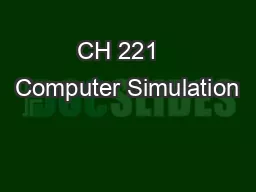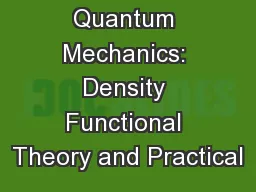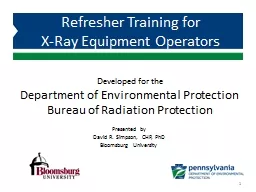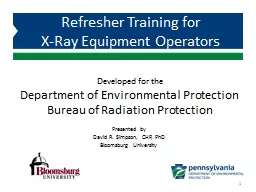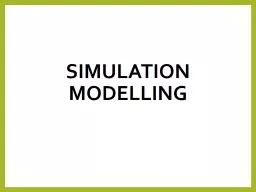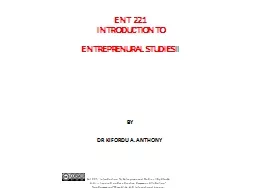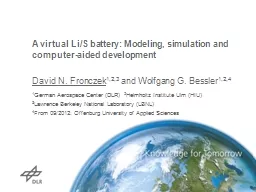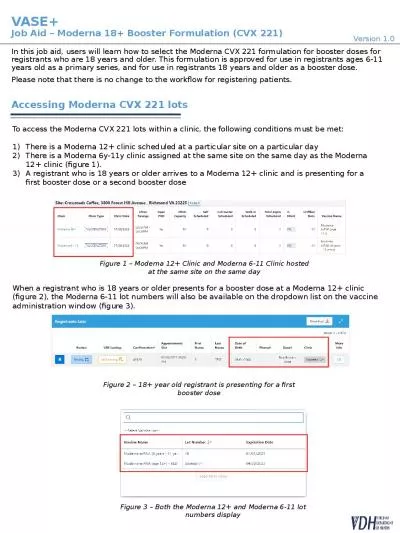PPT-CH 221 Computer Simulation
Author : celsa-spraggs | Published Date : 2018-03-23
Activity Photoelectric Effect Physics Electromagnetic Spectrum n c l Practical applications of the photoelectric effect solar cells smoke detectors security systems
Presentation Embed Code
Download Presentation
Download Presentation The PPT/PDF document "CH 221 Computer Simulation" is the property of its rightful owner. Permission is granted to download and print the materials on this website for personal, non-commercial use only, and to display it on your personal computer provided you do not modify the materials and that you retain all copyright notices contained in the materials. By downloading content from our website, you accept the terms of this agreement.
CH 221 Computer Simulation: Transcript
Download Rules Of Document
"CH 221 Computer Simulation"The content belongs to its owner. You may download and print it for personal use, without modification, and keep all copyright notices. By downloading, you agree to these terms.
Related Documents

